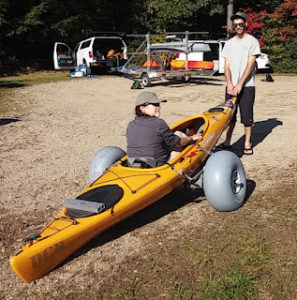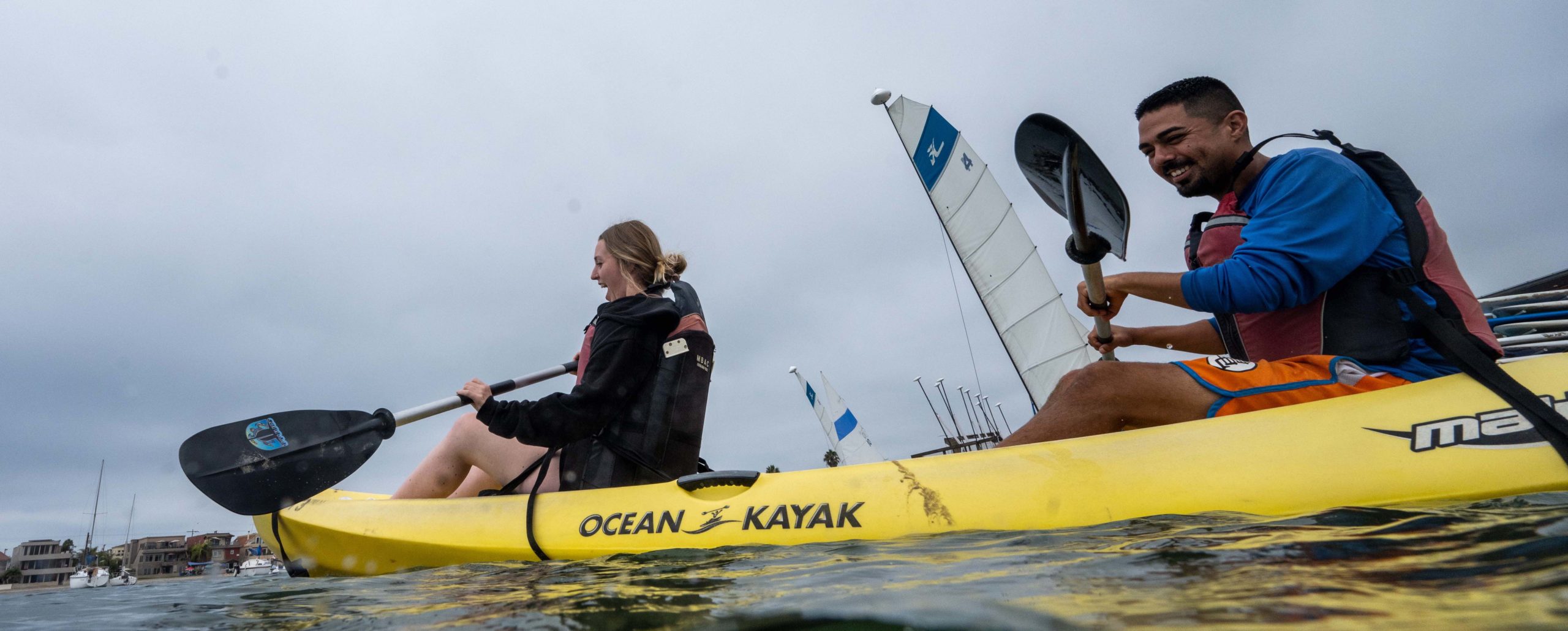Adaptive Equipment for Kayaking
Adaptive Equipment for Kayaking
The range of equipment for adaptive kayaking includes various types of kayaks, seating systems, outriggers, paddles, added external support, and transportation devices. Scroll below to learn more…
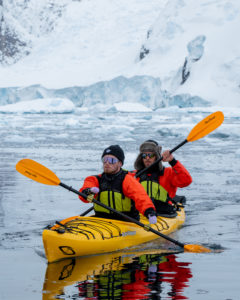
KAYAKS
SEATING SYSTEMS
OUTRIGGERS
PADDLES
GRIPPING DEVICES
ADDITIONAL SUPPORT
TRANSPORTATION
KAYAKS
Three main types of kayaks are used by athletes. The first type of kayak has a cockpit for the user to sit inside. The second type of kayak is meant for the user to sit on top, with ease of getting on and off the kayak. The third style of kayak used is called a Tandem kayak and is meant for two people to ride in together. Adaptations are made to these three styles of kayaks with equipment described below.
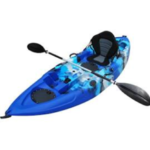
- Kayak with cockpit seating

2. Kayak with seat on top
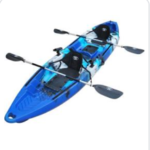
3. Tandem kayak with two-person seating
Information and photos pulled from Pelican Sport and Brooklyn Kayak Company. Kayak with Cockpit Seating. Kayak with Seat on Top. Tandem Kayak.
SEATING SYSTEMS
Different seating options exist for individuals to comfortably kayak. Keep scrolling to learn more.
Basic Seat
This seat offers lateral support, with each support point of the chair being adjustable to fit the user’s preference. All cushions have foam and are covered in fabric for skin protection. Various types of padding can be used on the seat depending on user preference. This seat attaches to the kayak by mounting to the seat pan on almost all kayaks. The basic seat has dual purpose and is also mountable to a canoe with a clamping system on the seat.
Information and photos pulled from Closing the Gap. Basic Seat.
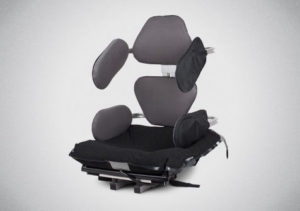
High Back Seat with Lower Back Support
This seat has a tall, padded back rest for additional support while seated. Additional padding is on the back rest for lower back support and increased comfort. The side wings are adjustable to the user’s preference and offer increased stability. The seat is a gel pad seat for pressure relief of the user’s bottom.
Information and photos pulled from Comfy Kayak. High Back Seat with Lower Back Support.
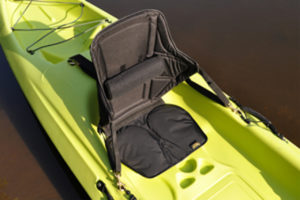
Gel Pad Seat
The gel pad seat is a pad filled with gel that is placed on top of the user’s seat for additional comfort. This seat pad provides pressure relief of the legs while seated. The exterior is made up of Nylon and the bottom is non-skid to remain in place.
Information and photos pulled from Liquid Surf and Sail. Gel Pad Seat.
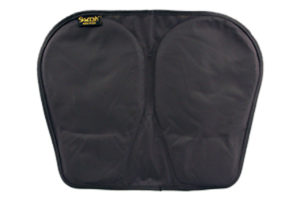
Inflatable Seat Pad
The seat pad is placed on top of the user’s seat for additional comfort. This seat pad provides pressure relief of the legs while seated and is filled with air rather than a gel material.
Information and photos pulled from Outdoor Play. Inflatable Seat Pad.
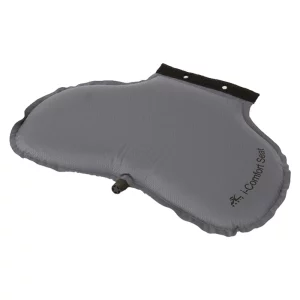
OUTRIGGERS
Kayak outriggers attach to the kayak and provide additional stability with use of additional floats on each side of the kayak.
Outrigger Kit
Many outrigger kits and options are available with the common purpose of increasing stability while kayaking. This device attaches to the base of the kayak and has an outrigger positioned on both sides of the kayak. These floats can be adjusted up and down, and closer and farther from the kayak. The distance these outriggers extend from the kayak determine how much added stability is provided, with a further extension from the kayak offering more stability.
Information and photos pulled from Angle Oar. Outrigger Kit.
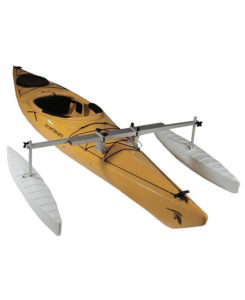
Paddles
Varying types of paddles for kayaking exist to suit a wide range of users. Scroll below to learn more about the varying types of paddles…
Mount Supported Paddle
This paddle attaches to the kayak and is supported by a mount. Use of this paddle helps to eliminate stress on shoulders, back, and joints, as most of the weight of the paddle is supported by the kayak. Use of the mount supported paddle allows for less torso rotation to occur while paddling. These paddles can remain angled downward or straight on each side, with positioning of the paddle at a downward angle allowing for a smaller range of motion while paddling.
Information and photos pulled from Angle Oar. Mount Supported Paddle.
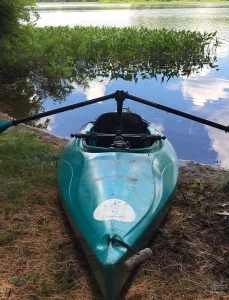
Paddle Pivot
This recumbent bike is available for individuals who like to ride with a second person, offering a reclined seat in the front with pedal controls for the front riders’ legs. The second rider in the back sits on a standard seat with their own set of pedals as well. The brakes are controlled by thumb throttles on the back of the recumbent seat.
Information and photos pulled from American Canoe Association. Paddle Pivot.
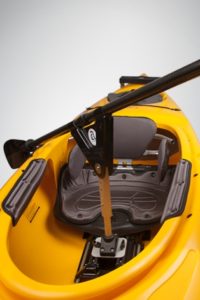
Bent Shaft Paddle
The bent shaft paddle looks similar to a standard paddle: However, this paddle has divets where each hand grasps the paddle. These divets reduce stress on wrists and help to prevent overuse injuries if you paddle frequently.
Information and photos pulled from Outdoor Play. Bent Shaft Paddle.
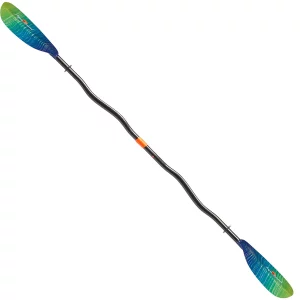
Lightweight Carbon Fiber Paddle
Carbon Fiber paddles are similar to a standard paddle. However, these are more lightweight and durable. Use of these paddles require less strength and endurance to engage in kayaking.
Information and photos pulled from G Power Sport. Lightweight Carbon Fiber Paddle.
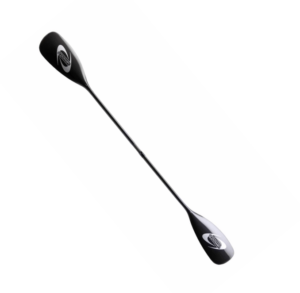
GRIPPING DEVICES
Devices are available to provide additional support to the hands and wrist while paddling to enhance the kayaking experience. Scroll below to learn more about some of the options for hand and wrist supports available for kayaking.
Paddling Mitts
These mitts attach to the paddle with velcro and provide increased stability with gripping the paddle. The user inserts their hands into the mitt and paddles with ease.
Information and photos pulled from Bonanza. Paddling Mitts.
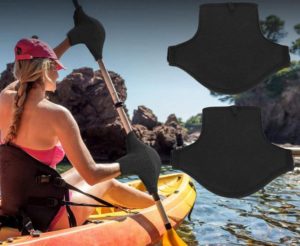
Wrist Cuff
This wrist cuff provides additional wrist and hand support while paddling. This cuff is applied with a simple to use hook and lock fasteners and helps to secure the paddler’s hand in place while paddling.
Information and photos pulled from Oregon Adaptive Sports. Wrist Cuff.
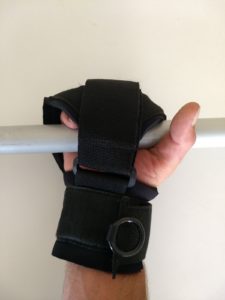
Back of Hand Grip
This device allows the user to slide their hand underneath for added support to hands while paddling. An individual’s arms are then able to take on most of the pressure while paddling. The back of the hand grip provides less additional support than the braces shown above: However, this may be more suitable for individuals who prefer to have less external support to their hands while paddling.
Information and photos pulled from Oregon Adaptive Sports. Back of Hand Grip.
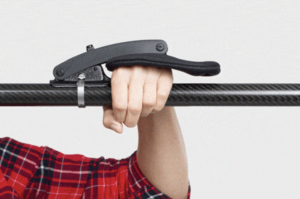
Paddle Grips
Paddle grips are simply placed onto the paddle and help to reduce slippage of the hands while kayaking. Many paddle grips are available with slight variations and overall help the paddler with controlling their grip.
Information and photos pulled from Board & Kayak. Paddle Grips.
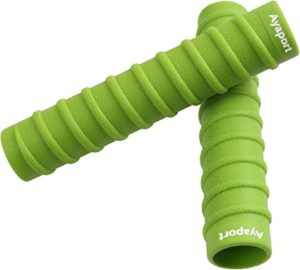
ADDITIONAL SUPPORT
Additional supports can be used for additional comfort and skin protection while kayaking.
Foam Supports
Many products are available that are intended to provide additional external support to the user while kayaking. These additional supports are typically made from a lightweight material, such as foam, and are commonly used for skin protection and additional comfort.
Information and photos pulled from Mass.gov. Foam Supports.
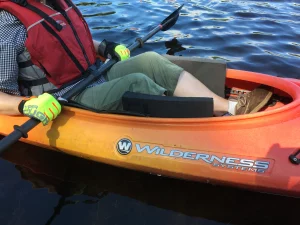
These foam supports can be placed in variety of locations which include but are not limited to: Lateral side of the user’s thighs and calves, beneath the knees, under the heels, beneath the bottom, behind the back, alongside the hips, etc. (whatever is suitable and most comfortable for an individual’s kayaking experience).
Information and photos pulled from Olympic Outdoor Center. Foam Supports.
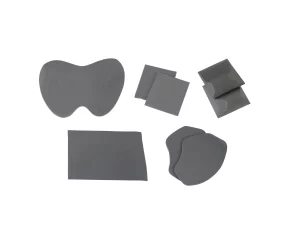
TRANSPORTATION
Products are available and designed to provide ease with getting in and out of the kayak, and with transporting the kayak on land. See below a few of the devices that help with transfers and transportation of your kayak…
Transfer Bench
A transfer bench can be used for the paddler to experience increased independence with transferring from a wheelchair into a kayak.
Information and photos pulled from Creating Ability. Transfer Bench.
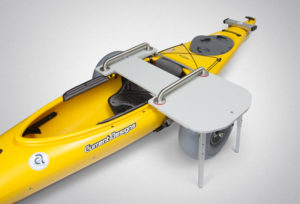
Kayak Cart
Kayak carts exist to help to transport the kayak from one location to another with ease. The paddler can be rolled directly into the water while seated in the kayak that is loaded on the cart, making the transition into the water smoother.
Information and photos pulled from Everyone Outdoors. Kayak Cart.
